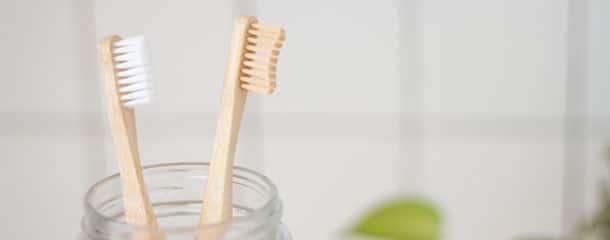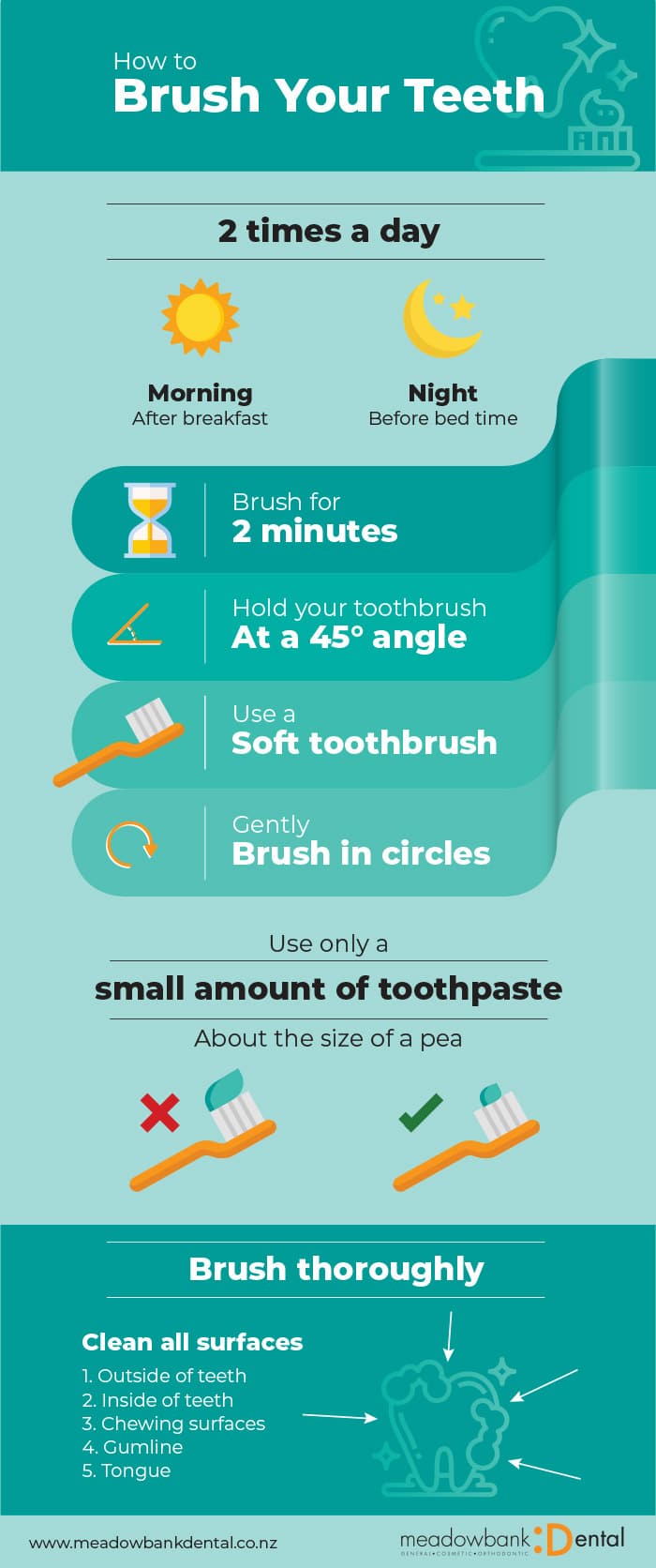How to brush your teeth correctly

We all know that brushing our teeth regularly is important but sometimes we forget or were simply never taught how to brush correctly. We may think we know how to brush best but some things that kiwis do every day can actually damage our teeth, like brushing too hard, brushing too often or not often enough, or using too much toothpaste. Read on to learn what doctors now recommend for your regular tooth brushing routine.
How often should you brush your teeth?
Dentists recommend that you brush your teeth at least two times a day. Once in the morning after you have eaten breakfast, and once again at night before you go to bed. It is best not to brush too soon after you have eaten anything acidic. This is because acidic foods and drinks like citrus and soda can weaken the tooth enamel, and brushing too soon can damage this important protective surface of your teeth. Waiting 30 minutes after acidic food and drink is recommended.
Brush your teeth for at least 2 minutes. Most kiwis don’t get close to 120 seconds. You may find it helpful to set a timer, at least at first. This will give you a feel for how long 2 minutes feels and you may soon realise that you have been cutting your tooth care time short. By brushing longer and slower, you increase the chances of removing more plaque from your teeth.
What is the proper technique for brushing your teeth?
Choose a good toothbrush
Electric toothbrushes are best, because they are designed to brush your teeth correctly with the head of the toothbrush spinning in circles. However, may people use them incorrectly, continuing to brush back and forth. Instead, hold the toothbrush over each tooth, slowly moving it across all the surfaces, and then move on to the next tooth. If you don’t have an electric toothbrush, choose a soft bristle manual toothbrush.
Remember to regularly change your toothbrush, or toothbrush head if using an electric toothbrush. When you see signs of wear on the bristles, such as discolouration or fraying, it is time to replace it. Every 3 or 4 months is often the recommended length of time to use your toothbrush before replacing it.
Brush your teeth thoroughly
To begin with, use a small pea-sized amount of toothpaste, you don’t need more than this. Hold your toothbrush at a 45° angle to your gums and brush in a gentle circular motion. You do not need to scrub your teeth hard, rather, think about it as giving your teeth a massage. Make sure that you cover all surfaces:
-
-
- Outside of teeth
- Inside of teeth
- Chewing surfaces
- Gumline
- Tongue
-
Make sure to rinse your toothbrush with water and place it standing upright to allow it to air dry. Do not rinse your mouth with water afterwards, it is best to use a mouthwash with fluoride so that you do not wash away the beneficial fluoride of the toothpaste.
Free tooth brushing tips infographic
Hang it on your bathroom door or in the classroom to remind yourself and the kids how to brush correctly.

After you are finished brushing your teeth.
Do more than just brush
At least one time a day you should include flossing and mouthwash in your routine. Floss before you brush to loosen any particles that have gotten stuck in your teeth. Floss can reach the surfaces of our teeth that brushing can’t reach. Also remember to rinse with a fluoride mouthwash after you finish brushing. Don’t rinse your mouth with water as this will wash away the fluoride.
Eat a healthy diet
Try not to have too many sugary, acidic or sticky foods and drinks. Consuming too much of these can contribute to tooth decay. The sugar in our diet are also eaten by bacteria to produce an acid that erodes the tooth enamel that protects our teeth. When this protective barrier is destroyed, our teeth become vulnerable to cavities and decay. Acidic food and drinks can also wear down our tooth enamel, which is why it’s important to limit these. This gives our saliva time to do it’s work and wash the sugar and acid away and protect our teeth.
Have regular check-ups
Even though we try our best to take care of our teeth, it is still important to see your dentist to get your teeth checked. Our toothbrush and floss can remove the soft plaque that builds up throughout the day, but if we miss a spot this plaque can build up and turn into tartar. Tartar is hard and attaches to our teeth and cannot be removed with floss or a toothbrush. When this happens, we need to see a dentist or hygienist to have it removed before it can cause further damage and decay.
How to brush with an electric toothbrush
The technique for brushing your teeth with an electric toothbrush is slightly different than with a handheld. For a quick overview you can watch the video below from Oral B.
